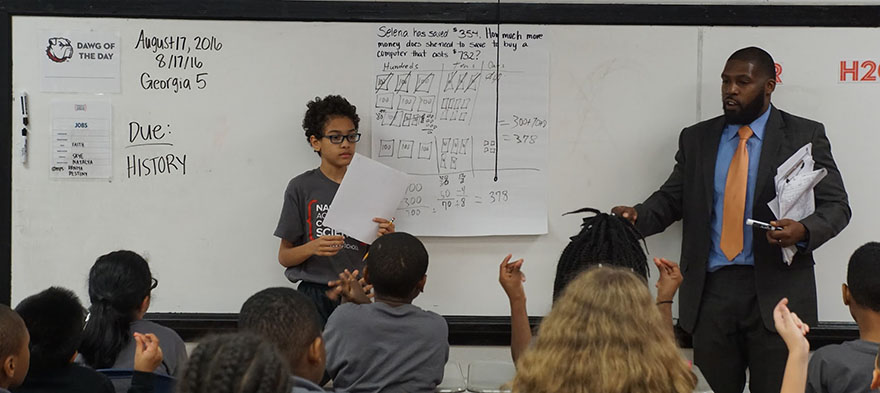
Dec 29, 2016 12:00:00 AM
I think sometimes we get confused and we think that there’s something about sitting next to White kids that makes Black kids smart,” she said. But, she asserts, it’s the resources predominantly White schools get that benefit Black students. “There’s something about sitting next to White kids that allows Black kids to get the same textbooks and to get the same instruction and to get physics in their high school, and that’s really it.For years, I questioned the motives of White, Christian parents who homeschooled their children. I wondered if their primary reason for doing so was to prevent their children from interacting with kids who didn’t look like them or share their worldview. But I wholly understand the growing numbers of Black parents who’ve turned to homeschooling because they’re disillusioned by their children’s treatment in school. Of course, the solution to the racial achievement gap isn’t a mass exodus of Black children from public schools. [pullquote position="left"]The remedy will require parents to hold teachers and school districts accountable[/pullquote], just as Black parents in Evanston have done after years of an unwavering achievement gap. As public schools have resegregated nationally, Black families in diverse school districts can’t afford to let their children get an education that’s any less excellent than the education non-Black children receive. This means questioning punitive discipline, challenging learning disorder diagnoses, fighting tracking and shining a spotlight on teacher bias. This also means giving children of color the tools to negotiate school systems in which they’re rarely viewed as young, gifted and Black.
Nadra Kareem Nittle is a Los Angeles-based journalist. She’s reported on education for the Los Angeles News Group, the Atlantic, EdSource and others.
Few issues in education spark more tension and debate than standardized testing. Are they a tool for equity or a burden on students? A necessary check on school systems or a flawed measure of...
Charter schools are public schools with a purpose. Operating independently from traditional school districts, they're tuition-free, open to all students, and publicly funded—but with more flexibility...
Despite the benefits of a diverse teaching force, prospective teachers of color fall out of our leaky preparation pipeline at every stage: preparation, hiring, induction, and retention. Here’s what...
Ed Post is the flagship website platform of brightbeam, a 501(c3) network of education activists and influencers demanding a better education and a brighter future for every child.
© 2020-2025 brightbeam. All rights reserved.
Leave a Comment